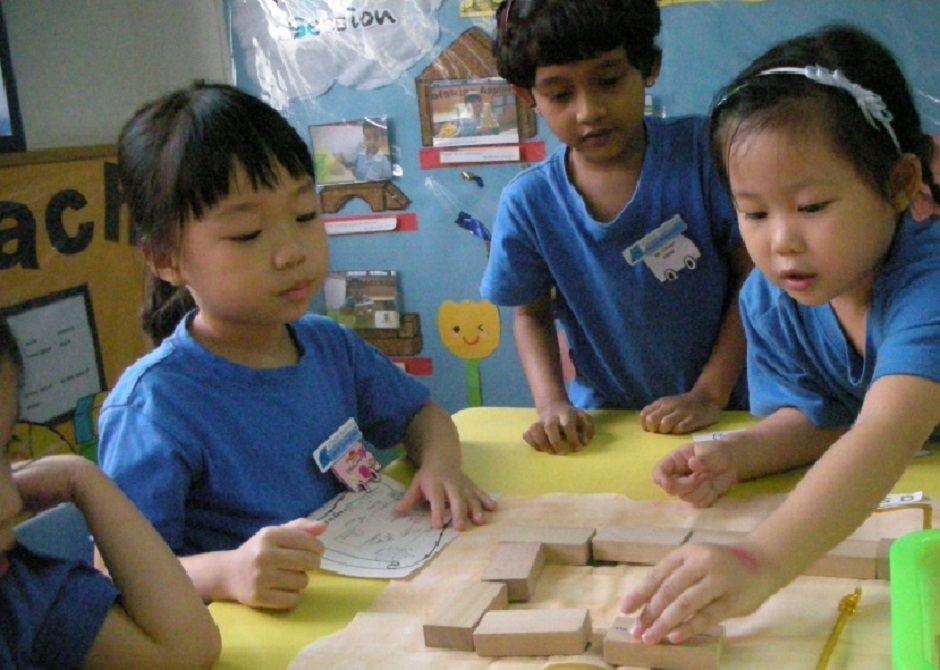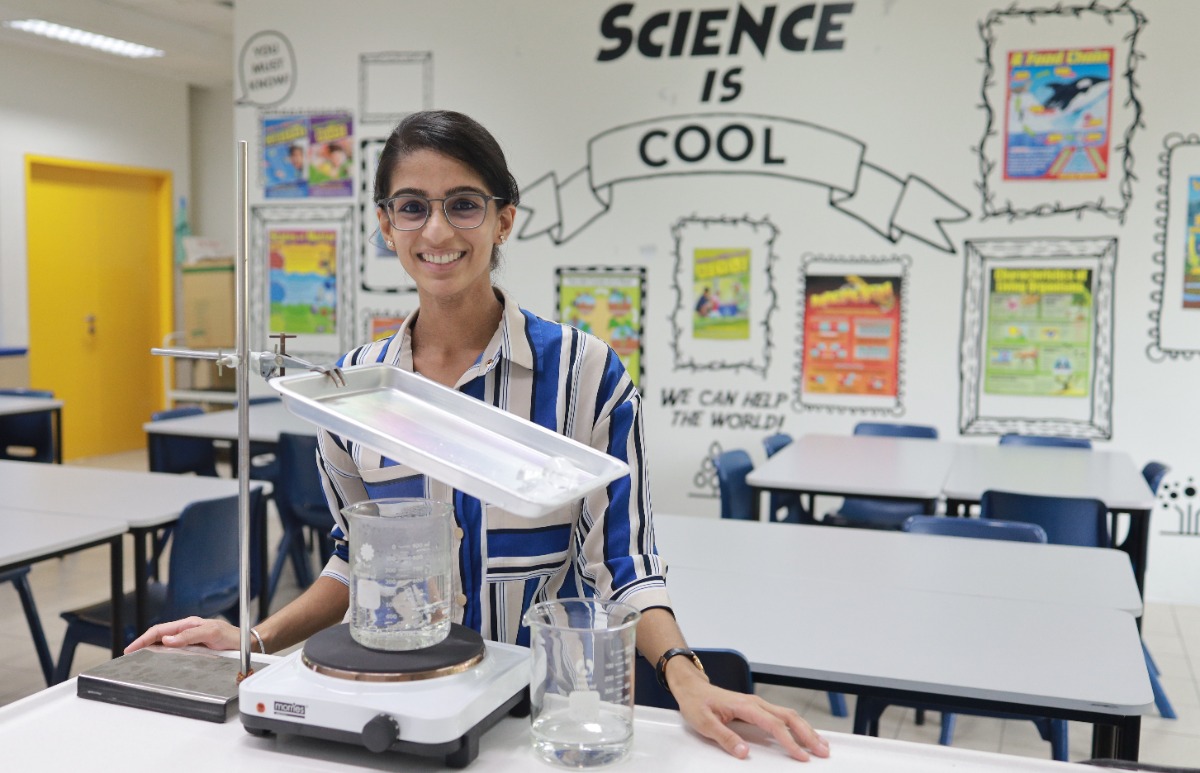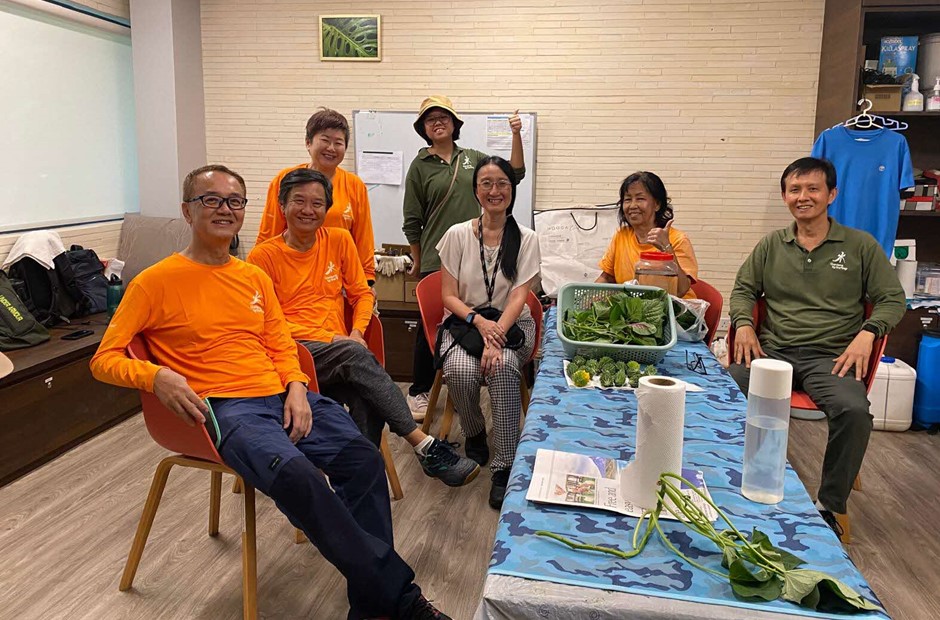“A parent once withdrew her child because we don’t have homework at K1,” says Mrs Dianne Seet.
“Others wonder why we don’t have spelling tests. These days, we see two-and-a-half-year-olds joining us with some vocabulary. They’ve played with iPads; they’ve travelled with their families; they know things.”
The Principal of Ascension Kindergarten takes all this in her stride. She understands parents can be anxious, and some see pre-school as an opportunity to prepare their children academically for Primary 1. Some parents even compare the highest number their children can count to.
Such parents, however, may be missing the point: “When children are comfortable, they absorb information better. They can make meaning and connections.”
Thankfully, most of the parents of her school’s 600 children agree. Every weekday, their boys and girls are put into groups of five to draw, act, and play with materials like building blocks and dough.
They learn the alphabet by digging into sandboxes and baskets, looking for pebbles painted with letters. They learn to spell by reciting cat, mat, rat and sat, gradually realising that if they sound like each other, they should be written like each other, too.
Developing children holistically
For those who remain unconvinced about this approach, Mrs Seet refers them to MOE’s Nurturing Early Learners (NEL) Framework, which guides pre-schools in designing and implementing a quality kindergarten curriculum for children aged 4 to 6.
The latest version of the Framework, which MOE disseminated in 2013, identifies the outcomes of pre-school education and defines what children should know and be able to do at the end of Kindergarten 2. These include listening for information as well as for enjoyment; demonstrating motor control and coordination; and managing their own emotions and behaviours.
It also suggests, in broad strokes, ways in which teachers can guide children towards these goals, such as engaging them in purposeful play and through quality interactions.
Nowhere in the NEL Framework and its accompanying Educators’ Guide – which are available on the NEL Portal – are there spelling lists or multiplication tables.
Mrs Seet finds NEL Framework a good fit for Ascension’s culture of play-based learning.
“It affirms what we’ve been doing,” she says, “while giving teachers the confidence not to over-teach.”
Taking guidance from it, Ascension streamlined its programmes, dropping topics such as grammar rules, fractions, and standard weights and measures.
“It’s about understanding numeracy concepts,” Mrs Seet explains. Rather than being able to recite multiplication tables, she prefers that her students understand why people multiply (“to count faster”) and divide (“to be fair when sharing things”).
Rather than chanting numbers up to a hundred, she wants them to be able to show what five pencils look like, and understand that five pencils is one more than four.
She is well aware that some parents may be uncomfortable with a seemingly content-light approach, especially if their children are bright. She wants them to ponder this: “A child may be academically gifted. But can he work in a team? Can he articulate his thoughts? Can he take information and apply it?”
Less structure, more learning
Having freed up time from excessive teaching, Ascension’s teachers again turned to the NEL Framework and Educators’ Guide to decide how best to fill that time with meaningful learning experiences.
They used the Learning Cycle, one of the concepts in the Educators’ Guide, to deepen Kindergarten 2 children’s appreciation of Singapore’s cultures and traditions.
It began with the children learning about other cultures during Heritage Week, then using a set of questions provided by their teachers to interview anyone in their neighbourhood of a different race. With the responses in hand, they came up with rhymes about their interviewees, and were guided to string them into poems.
The verses they came up with are simple but delightful – one child used “crunchy”, “yummy”, “curry” and “tummy” are used to describe a Eurasian friend and her favourite food.
The children’s poems were compiled into a publication entitled “Oh, the Cultures We Got to Know”, with illustrations contributed by the more artistically inclined among them.
Mrs Seet shares with pride that some parents were pleasantly surprised at the final product, remarking, “You mean my child is capable of that?” She also explains that the Learning Cycle encouraged her teachers to tackle the theme of heritage by devising a series of activities that built on each other.
She is happy that NEL has prompted her kindergarten to come up with new programmes that help its children explore, grow, respect one another and to resolve differences amicably. This sort of character-building, to her, is what pre-school education is about.
“We want thinking children, who have the confidence to speak up and ask questions,” she says. “If you over-teach them they become ‘waiting children’ – always waiting for someone to tell them the answer.”






